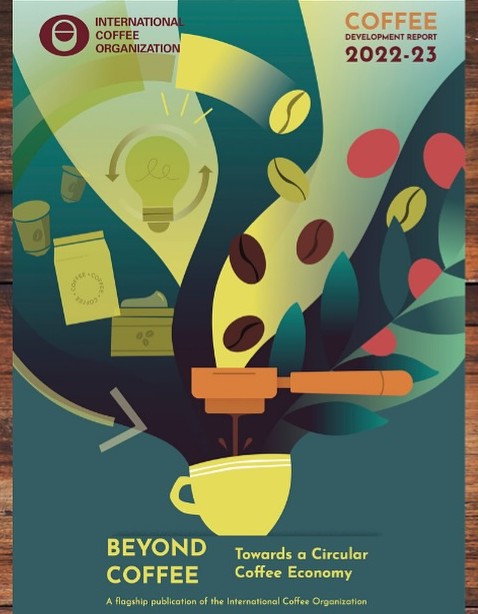
The International Coffee Organization Unveils Challenges Facing the Global Coffee Sector
In its latest report, the International Coffee Organization reveals key insights and crucial details about the coffee sector, which is a fundamental part of daily life for billions worldwide. The “Coffee Development Report” (CDR) for 2022-2023 highlights growing global challenges facing the sector, from severe price fluctuations, production and export declines, to the increasing need to adopt circular economy practices as a means to support sustainable resources and develop new economic opportunities.
Price Fluctuations
During the 2022-23 season, the International Coffee Organization’s composite price index (I-CIP) began at 190.18 cents per pound, peaking at 194.92 cents in October 2022. However, prices later fell sharply to 145.54 cents in January 2023, reflecting a significant average fluctuation rate of 8.8%. In comparison, futures contracts in New York exhibited even greater volatility at 11.3%, underscoring the intense volatility that has dominated global coffee markets.
Variation in Major Coffee Types
The prices of major coffee types showed notable differences; robusta coffee, widely used in blends, saw an increase of 5.1% from 106.89 to 112.39 cents per pound. Meanwhile, Colombian coffee experienced a sharp decline of 25.2%, dropping from 289.38 to 216.50 cents per pound. This disparity reflects significant challenges for farmers, particularly arabica producers who face climate impacts and rising production costs.
Decline in Exports
Global coffee exports saw a marked decline of 5.7%, with total exports reaching 122.9 million 60-kg bags. Green coffee beans held the largest share at 90.1%, equivalent to 110.7 million bags. The share of arabica in green coffee exports fell from 63.6% to 60.4%, indicating a market shift towards the more affordable robusta, due to economic pressures and rising living costs, pushing consumers to reduce spending on premium coffee.
Global Production
Global coffee production during 2022-23 reached approximately 165.5 million bags, a slight decline of 0.04% compared to the previous year. Production rates varied by region, with Asia and Oceania seeing a 3% drop, particularly in Vietnam due to adverse climate conditions. Meanwhile, South America achieved a slight increase of 1.2% due to Brazil’s agricultural cycle. At the variety level, arabica production fell sharply by 10.4% to 74.6 million bags, underscoring the vulnerability of this type to climate change and pests. In contrast, robusta production increased by 2.7% to 43.8 million bags, reflecting increased reliance on this hardier, more adaptable variety.
Decline in Consumption
According to the report, global coffee consumption declined by 1.9% to 173.0 million bags, reflecting the impact of rising prices and decreased consumer purchasing power. Non-coffee-producing countries, which represent the largest portion of demand, saw a consumption decline of 4.0%, reaching 117.5 million bags. While Russia experienced a 7.1% increase in consumption, Canada saw a significant 9.5% drop, illustrating the strong economic impact on coffee spending in certain countries.
Circular Economy as an Opportunity for Sector Sustainability
The report highlights the increasing importance of adopting circular economy practices in the coffee sector, which generates about 40.68 million tonnes of biomass annually, including by-products such as coffee husks and production waste. The report points out that natural coffee production methods yield around 14.68 million tonnes of coffee husks, while washed methods produce about 6.92 million tonnes. The report emphasizes the sector’s potential to transform this waste into valuable economic resources that support sustainability, through products like organic fertilizers, biofuels, and cosmetics. For example, coffee husks can be used as organic mulch or in the production of charcoal or natural fertilizers, contributing to sustainable agricultural practices and enhancing the sector’s economic value.
Towards Complete Sustainability
The International Coffee Organization’s 2022-23 report provides a comprehensive view of the coffee sector amidst current challenges, from price fluctuations to climate changes and market pressures. With growing interest in the circular economy, the sector has an opportunity to strengthen its sustainability and create a more efficient and resilient production environment. The report underscores the importance of collaboration among all parties to achieve a sustainable future for coffee, through innovation and integration between production, recycling, and waste management. Coffee remains an integral part of life for millions around the world, and the sector faces a constant challenge that calls for practices that protect the environment, support farmers, and contribute to an economic balance that serves everyone and enhances the sector’s resilience to future challenges.



